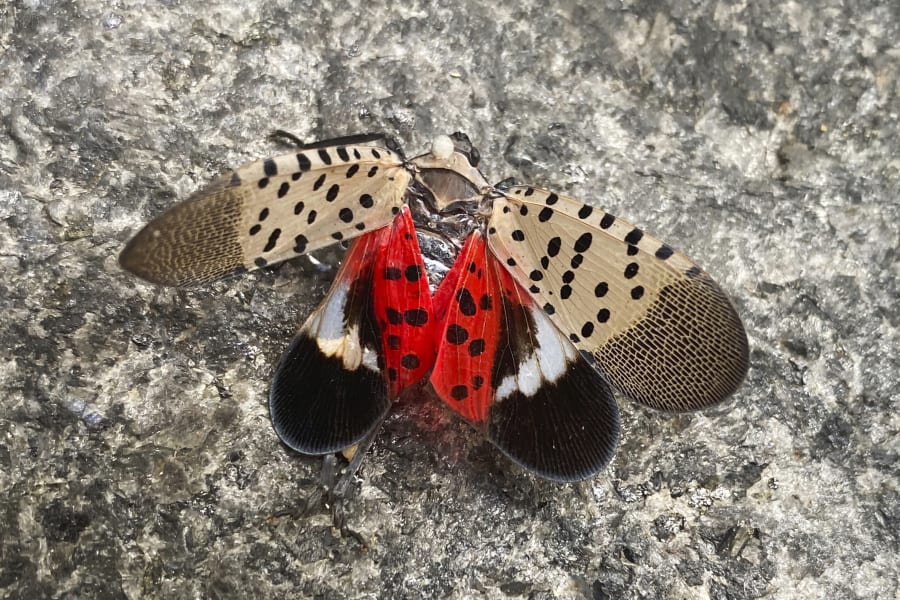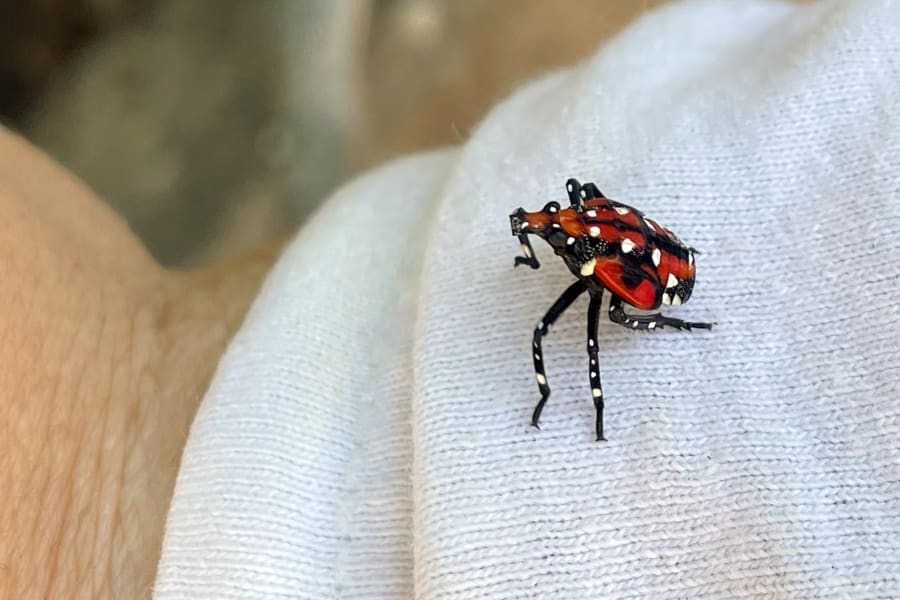LAMBERTVILLE, Mich. – Live spotted lanternflies, invasive insects hailing from east Asia, were recently discovered in Metro Detroit.
The “small population of juvenile spotted lanternfly” detected this June in Monroe County marks the second instance the live insect has ever been spotted in the state, the Michigan Department of Agriculture and Rural Development reports. The invasive insect, which can wreak havoc on plants and crops, was found in Lambertville and recently confirmed by the USDA.
“The infestation was detected through spotted lanternfly monitoring traps deployed by Michigan State University, as part of collaborative survey initiatives with MSU, MDARD, and the USDA,” MDARD said in a press release on Monday. “This work is a critical component of our ongoing efforts to identify and limit the spread of spotted lanternfly in Michigan.”
There have been a handful of reports of dead spotted lanternflies in Michigan over the last few years, but the dead insects were found in packaging materials or objects shipped from states with known infestations. The first time the spotted lanterfly was found alive in Michigan was in 2022 in Oakland County.
Here’s what to know about the insect, and what to do if you find one.
What is a spotted lanternfly?
The spotted lanternfly feeds on more than 70 different plants including grapes, apples, hops and hardwood trees. MDARD says the insect “prefers to feed on the invasive tree-of-heaven (Ailanthus altissima), but also feeds on a wide range of plants including grapevines and trees such as black walnut, river birch, willow, sumac, and red maple.”
The spotted lanternfly was first detected in the United States in 2014 in southeastern Pennsylvania and has been spreading since. Infestations have been confirmed in 17 states as of 2024, including in Connecticut, Delaware, Indiana, Maryland, Massachusetts, New Jersey, New York, North Carolina, Ohio, Pennsylvania, Virginia, and West Virginia.

How the spotted lanternfly causes damage
It sucks sap from host plants while secreting large amounts of sugar-rich, sticky liquid called “honeydew.”
The honeydew can lead to black sooty mold that can kill plants and foul surfaces. The honeydew attracts pests like yellow jackets, flies and ants.
“Our agricultural and natural resources are part of Michigan’s identity, and the spotted lanternfly has the potential to forever change that landscape,” the Michigan Department of Agriculture and Rural Development previously said. “With its ability to wreak havoc on grapes, apples, hops, stone fruits and more, this could be devastating to Michigan’s farmers and the state’s food and agriculture industry.”
What to do if you find a spotted lanternfly
If you find a spotted lanternfly egg mass, juvenile or adult take several photos and make note of the date, time and location of the sighting. Officials say photos are essential when reporting sightings.
Then report your findings to MDARD online right here, via email at MDA-Info@Michigan.gov, or by calling 800-292-3939. If you can, collect a specimen in a container for verification.
Before traveling, check out the map of confirmed spotted lanternfly locations. For additional information on identifying or reporting, visit Michigan.gov/SpottedLanternfly.
Lifecycle of a spotted lanternfly
From late summer to the first hard frost, spotted lanternflies are in their adult stage and easiest to identify.
Adults are roughly one inch long. Their folded wings are gray to brown with black spots. Open wings reveal a yellow and black abdomen and bright red hind wings with black spots transitioning to black and white bands at the edge.
They lay egg masses in the fall. The masses resemble old chewing gum, with a gray, waxy, putty-like coating. Egg masses can survive winter temperatures and hatch in the spring.
Hatched eggs appear as brownish, seed-like deposits. Spotted lanternfly juveniles are wingless and are black with white spots, developing red patches in their final juvenile stage.

Why public awareness is vital
While spotted lanternflies cannot fly long distances, they can lay eggs on nearly any surface. They have been known to lay eggs on cars, trailers, firewood, outdoor furniture, and more.

Before you leave an infected area, you should check your vehicles, firewood and other outdoor equipment for hitchhikers.
People and businesses receiving shipments from states known to have spotted lanternfly should be on the lookout for egg masses on goods and packing materials.




